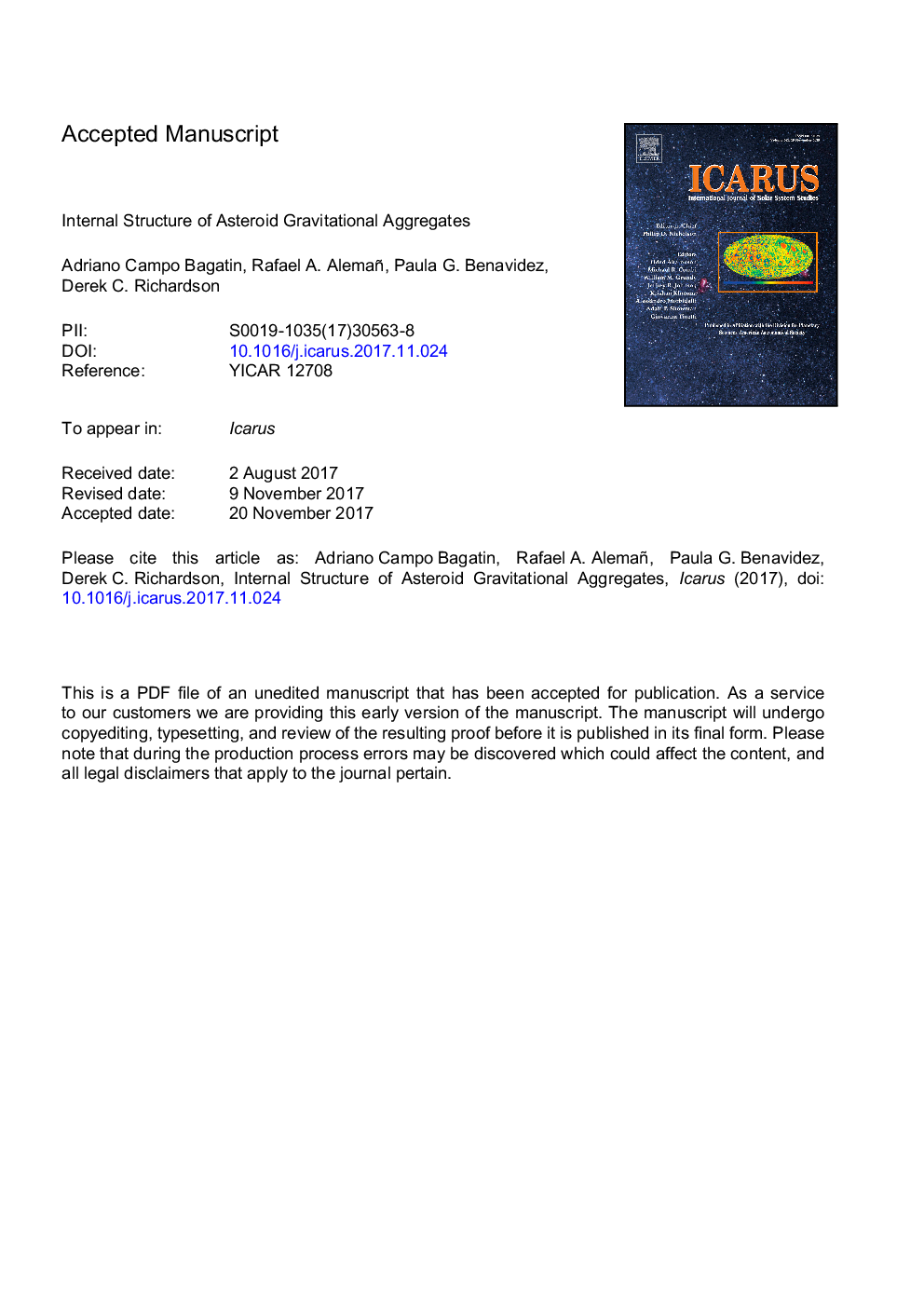| Article ID | Journal | Published Year | Pages | File Type |
|---|---|---|---|---|
| 8134579 | Icarus | 2018 | 54 Pages |
Abstract
The internal structure of small asteroids is fundamentally unknown due to lack of direct measurements. The only clues on this topic come from theoretical considerations and from the comparison between measured bulk densities of asteroids and their corresponding analogue meteorite densities. The mass distribution and the void space between components in a gravitational aggregate determine the structure of such objects. In this paper we study numerically the dynamical and collisional evolution of the reaccumulation process of the fragments created in catastrophic collisions of asteroids in the 500â¯m to 10â¯km size range. An effort to consider irregularly shaped fragments is made by taking advantage of the results of laboratory experiments that provide relative mass distributions and aspect ratios for fragment shapes. We find that the processes that govern the final properties of the resulting aggregates are mainly stochastic, however interesting patterns can be identified. This study matches estimated macro-porosities of S-type asteroids and finds a loose linear relationship between macro-prorosity of asteroid aggregates and the mass ratio of the largest component to the whole aggregate (for both S and C-types). As for observed C-type asteroids, we conclude that their interiors should be more fragmented than in the case of S-type asteroids, explaining the difference in the estimated macro-porosity of real C asteroids with respect to S-types. We also find that slow rotators may be interpreted as a natural result in the process of gravitational reaccumulation.
Related Topics
Physical Sciences and Engineering
Earth and Planetary Sciences
Space and Planetary Science
Authors
Adriano Campo Bagatin, Rafael A. Alemañ, Paula G. Benavidez, Derek C. Richardson,
